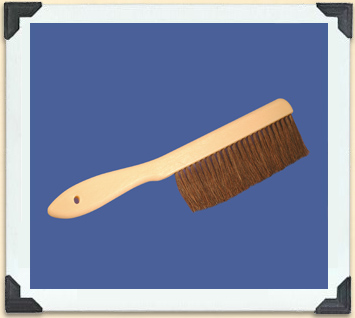The Keeper

The soft bristles of a bee brush allow the beekeeper to move livestock without causing injury.
© Canada Agriculture and Food Museum
Bee Brush
Using a gentle sweeping motion, the beekeeper uses a bee brush with long soft bristles to remove bees from the frames when collecting honey. Beekeepers are always careful not to hurt bees when removing them.
Commercial beekeepers often use a bee blower (which is much like a leaf blower) for this job. It can remove a larger number of bees more quickly.




